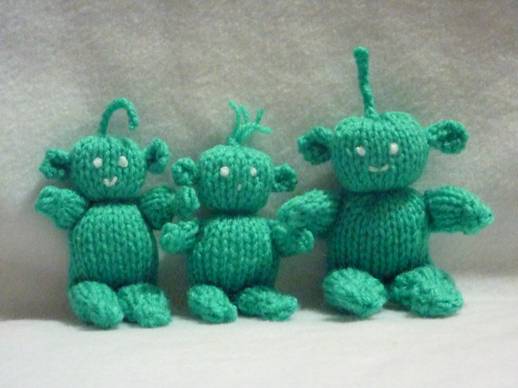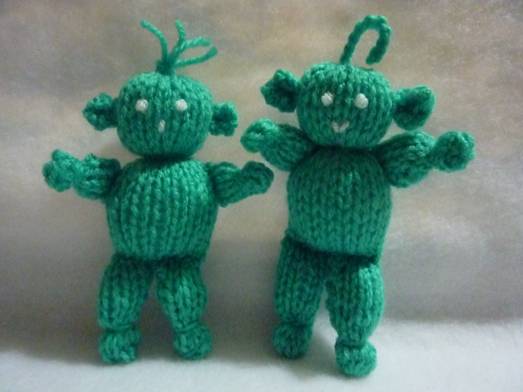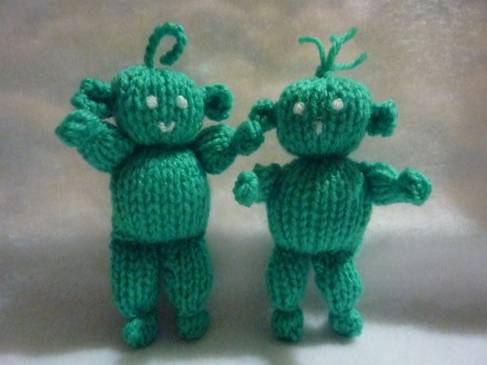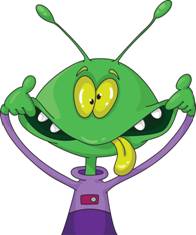
Salty Sam’s Fun Blog for Children
Number 291
Stargazing
Hello Everyone

The other day, Bill and Bob asked me a very interesting question.
They asked me what the difference is between the universe and space.
Actually it is a very easy question to answer.
The universe is everything that exists and space is the gaps between the planets.
The universe is the whole of space and everything in it. lt contains more stars than there are grains of sand on all the beaches of the world. lt also contains other dimensions that are difficult for us to see – like heaven.
The universe seems to have no edge and is expanding all the time.
Scientists who study space are called astronomers. ‘Astro’ comes from the Greek word for star.
The word astronaut means star sailor.
Astronomy is the study of stars. Ancient astronomers drew maps of the stars.
They grouped some of them into constellations and gave them names like Orion and The Plough and noticed that some of the stars moved. These wandering stars were actually planets.
They were the planets that are in our solar system: Mercury with only an 88 day year, Venus, the hottest planet, hidden by clouds, Mars with its dusty red surface, Jupiter which is twice the size of all the other planets put together, Saturn with its famous rings, Uranus the first planet to be discovered with a telescope and Neptune on the outer reaches of the solar system.
The outer planets are much bigger than the first four – which of course includes Earth; the third planet from the Sun.
These outer planets are gas planets, all four have rings around them but Saturn’s are the most spectacular.
Our solar system (that means a system of planets orbiting a star) is in a galaxy. A galaxy is a giant whirling mass of stars shaped like a flat disc with a swollen centre. Our galaxy is called The Milky Way.
Our sun is a mid-sized star. Our solar system is positioned towards the edge of the Milky Way.
The word ‘solar’ relates to the word ‘sun’.
The Sun is a ball of immensely hot gases. lts heat is produced as hydrogen gas which is changed into another gas called helium. (You may have had a balloon filled with helium given to you at some time. You can see how the balloon floats because helium is lighter than air.)
Bursts of gas, called prominences, shoot out far into space from the surface of the Sun.
Today, astronomers use telescopes on the ground and in space. They can detect stars so far away that light from them takes hundreds of years to reach Earth.
Astronomers use radio telescopes to study the radio waves that emanate from stars. A space telescope positioned above the Earth’s atmosphere sees stars far more clearly than one that is placed on the ground.
When scientists build telescopes on the ground they are enormous. They use a reflecting telescope or a radio telescope. These telescopes are carefully positioned so that they can get a good view. There are important telescopes in Hawaii and Antarctica.
Children can buy telescopes to look at the stars (but not the Sun because it is too close and so it is dangerous to look at it) but these telescopes are much bigger.
Scientists measure light and other rays to study the most distant galaxies. These are called quasars. Light from these quasars takes thousands of millions of years to reach us.
lf you consider that the speed of light in a vacuum is 299,792.458 metres per second, that just shows you how far away these quasars are.
Sunlight takes about 8 minutes and 17 seconds to reach the Earth.
Stars in the Universe are different sizes and different temperatures and different ages.
A star is a glowing sphere of plasma and is held together by its own gravity.
When a star explodes it is called a supernova.
A nebula (the Latin for fog) is a cloud of dust and gases in space.
Have a look in at the spectacular picture of a nebula in the Picture Gallery this week. lsn’t it beautiful?
Bye bye everyone – don’t forget to subscribe to my blog!
lf you like my blog, please support it by telling all your friends and followers about it.
Thank you!
And see you again next Fun Friday!
Love and kisses
Salty Sam

www.christina-sinclair.com


Bill and Bob’s Joke of the Week![]()
![]()
Bill: What do you call a space magician?
Bob: l don’t know. What do you call a space magician?
Bill: A space sorcerer!

Salty Sam © Christina Sinclair 2015
Unauthorized use and/or duplication of material from this blog without express and written permission from this blog’s author and owner is strictly prohibited.
Links may be used to www.christina-sinclair.com

Picture Gallery

Large telescopes on Earth are usually housed in buildings with domed tops
The telescopes can swivel around
 A radio telescope on Earth
A radio telescope on Earth
 Hubble telescope in orbit around the Earth
Hubble telescope in orbit around the Earth
 The constellation of Leo
The constellation of Leo
with the lines drawn onto the picture
 Different types of stars
Different types of stars
(cmglee, NASA Goddard Space Flight Center)
 Carina Nebula
Carina Nebula
(NASA, ESA, and the Hubble SM4 ERO Team)


 THE SALTY SAM NEWS DESK
THE SALTY SAM NEWS DESK

If you have gone back to school this week, and it is feeling a bit strange, and you are worrying that you have a hole in your education because you haven’t been there for so long, please don’t worry.
It will be very possible for you to catch up in time.

Last week I was telling you about Bill and Bob’s Marmite and cheese pinwheels.
This week they decided to make some pizza ones. These snacks are lovely to slip into a lunch box to take to school!
If you would like to try them, here is the recipe.
NEWSDESK MINIMAKE
PIZZA PINWHEELS
INGREDIENTS
A sheet of ready-made puff pastry
A jar of sun-dried tomatoes in oil
100g-150g grated cheddar cheese
A pinch of chili powder
2 teaspoons dried oregano
METHOD
Cut up 8-10 of the sun-dried tomatoes into tiny pieces and spread them over the sheet of pastry
Now wash your hands because they will probably be quite oily
Sprinkle the other ingredients over the pastry too
Roll the pastry up into a tight roll
Cut to roll in the middle and then divide it into four and them eight
The easiest way to cut the roll up is to use a sawing action with your knife at the top so that you don’t squash the roll too much. You might find it a good idea to cut the bottom of the slices with scissors.
Place the pinwheels on their sides on a baking tray with plenty of room between each because they will grow as they cook.
Don’t make your slices too thin otherwise your tomato pieces might overcook.
TIP
Don’t use the pastry straight from the fridge because it might crack when it is very cold – leave it to warm up to room temperature before you start to handle it.


*********************
TO ADVERTISE ON THIS BLOG
PLEASE CONTACT:
christina.sinclair.ads@aol.co.uk
*********************


Quick Quiz
Un-jumble these words to find things to do with space…
- pasec hisp
- laxagy
- nepalts
- stranouta
- tras gilth
- ceasp ropeb
- totreemie




lt’s the Weekend!

HOW TO MAKE A FAMlLY OF ALlENS
There are three patterns here of different-sized aliens so you can make as many people as you like in your alien family.
Your aliens can be green or purple or you could have a multi-coloured family if you like. You could knit just one size but in different colours.
You can knit a whole spaceship of them!

LARGE ALIEN
LARGE ALIEN BODY (KNIT ONE)
Using 4mm knitting needles and green dk yarn cast on 22 stitches
Knit 26 rows of stocking stitch
Don’t cast off – instead run a length of yarn through the stitches so that you can take them off your needle
LARGE ALIEN LEGS (KNIT TWO)
Using 4mm knitting needles and green dk yarn cast on 12 stitches
Knit 14 rows of stocking stitch
Don’t cast off – instead run a length of yarn through the stitches so that you can take them off your needle
LARGE ALIEN ARMS (KNIT TWO)
Using 4mm knitting needles and green dk yarn cast on 10 stitches
Knit 10 rows of stocking stitch
Don’t cast off – instead run a length of yarn through the stitches so that you can take them off your needle
LARGE ALIEN EARS (KNIT TWO)
These ears are knitted in garter stitch
Using 4mm knitting needles and green dk yarn cast on 6 stitches
Knit 2 rows
Knit 2 together, knit 2, knit 2 together
Knit 2 together. Knit 2 together
Knit 2 together
Cast off
Pinch the bottom of the ears and sew the two bottom corners together
LARGE ALIEN ANTENNA (MAKE ONE)
Crochet 15 chains into a length of green yarn and sew one end of yarn into the chain to neaten and the other into the top of the alien’s head once it has been stuffed.

MEDIUM-SIZED ALIEN
MEDIUM-SIZED ALIEN BODY (KNIT ONE)
Using 4mm knitting needles and green dk yarn cast on 20 stitches
Knit 24 rows of stocking stitch
Don’t cast off – instead run a length of yarn through the stitches so that you can take them off your needle
MEDIUM-SIZED ALIEN LEGS (KNIT TWO)
Using 4mm knitting needles and green dk yarn cast on 10 stitches
Knit 12 rows of stocking stitch
Don’t cast off – instead run a length of yarn through the stitches so that you can take them off your needle
MEDIUM-SIZED ALIEN ARMS (KNIT TWO)
Using 4mm knitting needles and green dk yarn cast on 8 stitches
Knit 8 rows of stocking stitch
Don’t cast off – instead run a length of yarn through the stitches so that you can take them off your needle
MEDIUM-SIZED ALIEN EARS (KNIT TWO)
These ears are knitted in garter stitch
Using 4mm knitting needles and green dk yarn cast on 5 stitches
Knit 2 rows
Knit 2 together, knit 1, knit 2 together
Knit 2 together. Knit 1
Knit 2 together
Cast off
Pinch the bottom of the ears and sew the two bottom corners together
MEDIUM-SIZED ALIEN ANTENNA (MAKE ONE)
Crochet 10 chains into a length of green yarn and sew one end of yarn into the chain to neaten and the other into the top of the alien’s head once it is stuffed.
LITTLE ALIEN
LITTLE ALIEN BODY (KNIT ONE)
Using 4mm knitting needles and green dk yarn cast on 18 stitches
Knit 22 rows of stocking stitch
Don’t cast off – instead run a length of yarn through the stitches so that you can take them off your needle
LITTLE ALIEN LEGS (KNIT TWO)
Using 4mm knitting needles and green dk yarn cast on 8 stitches
Knit 10 rows of stocking stitch
Don’t cast off – instead run a length of yarn through the stitches so that you can take them off your needle
LITTLE ALIEN ARMS (KNIT TWO)
Using 4mm knitting needles and green dk yarn cast on 6 stitches
Knit 6 rows of stocking stitch
Don’t cast off – instead run a length of yarn through the stitches so that you can take them off your needle
LITTLE ALIEN EARS (KNIT TWO)
These ears are knitted in garter stitch
Using 4mm knitting needles and green dk yarn cast on 4 stitches
Knit 2 rows
Knit 2 together, knit 2 together
Knit 2 together
Cast off
Pinch the bottom of the ears and sew the two bottom corners together

TO MAKE UP
- Sew up the centre back seam of the body right sides together and turn body right way out
- Sew up the bottom seam wrong sides together making sure that the centre back seam is in the centre of the back
- Sew up the leg inside seams with right sides together
- Turn the legs the right way out and pull in the ends of the feet and slip the yarn up the back seam to the back of the ankle and secure into the back seam
- Bind yarn tightly around the bottom of the legs to make ankles
- Lightly stuff the legs and sew the tops onto the bottom of the body by laying the legs onto the stomach and sewing from behind (place the leg seams facing each other)
- Sew up the under arm seams with right sides together
- Turn the arms the right way out
- Bind yarn tightly around the arms to make wrists in the same way that the ankles were made
- Lightly stuff the arms and sew the tops onto the sides of the body by laying the arms onto the chest and sewing from behind
- Stuff the body and pull in the top of the head to close it up then take the yarn down the back seam and secure into the back seam at shoulder level
- Bind some yarn tightly around the body twice above the arms to make a neck
- Sew the ears onto the sides of the head
- Sew the eyes onto the front of the face using white dk yarn – make the eyes with French knots (wind the yarn around the needle three times)
- Sew on a mouth using white yarn
- Sew an antenna onto the top of the head or make a top knot with the ends of the yarn used to sew on the ears
TIPS
-
- When you sew up the seams, take the yarn to the outside of the knitting ready to make the ankles, wrists and neck.
- Sew the face on before or after making up – whichever you find the easiest to do.

Please note that the material on this blog is for personal use and for use in classrooms only.
It is a copyright infringement and, therefore, illegal under international law to sell items made with these patterns.
Use of the toys and projects is at your own risk.
©Christina Sinclair Designs 2015


Quick Quiz Answers
- space ship
- galaxy
- planets
- astonaut
- star light
- space probe
- meteorite


For an Embroidery Stitches Chart
Check out Blog Post 3


I could not resist commenting. Perfectly written!
Well, thank you for commenting Alex!
I love this blog. I don’t think there is anything else like it on the internet.
Thank you Dodie. l think you might be right! 🙂